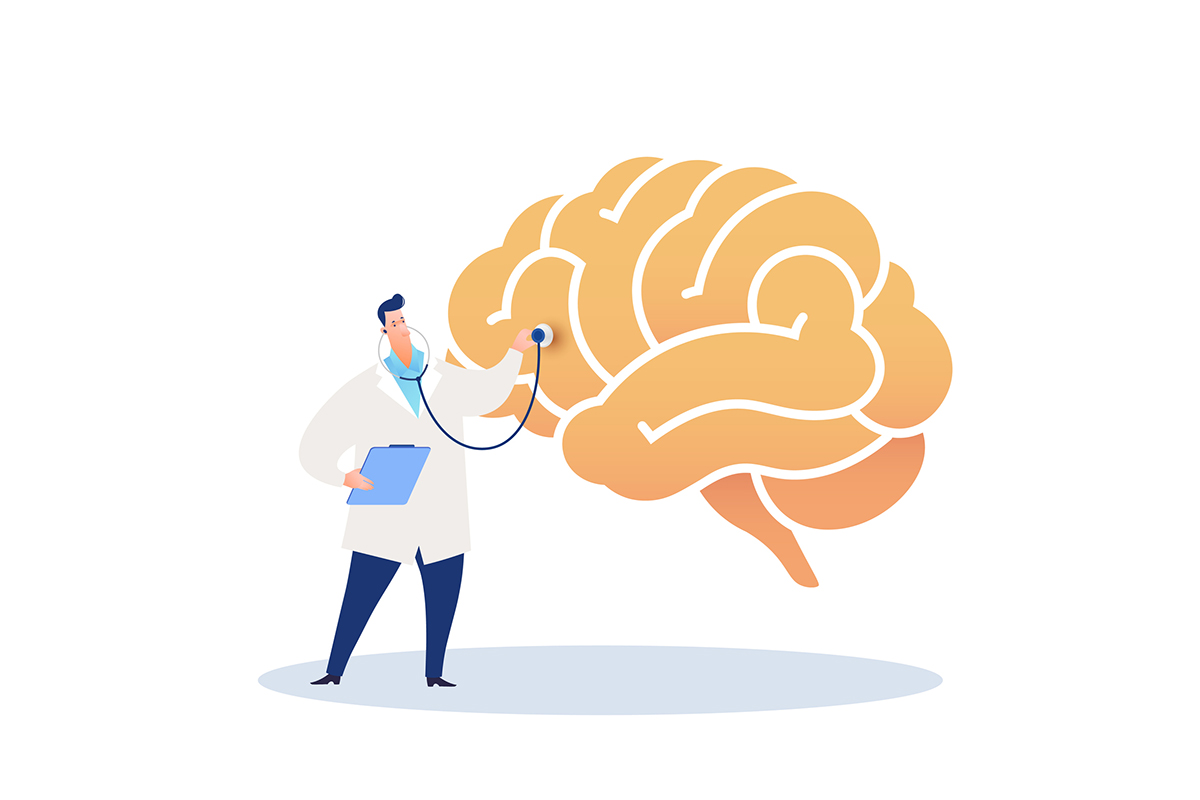Prevalence of Unrecognized Cognitive Impairment in Federally Qualified Health Centers: This is an alarming review that, on the one hand, highlights the pervasiveness of cognitive decline among senior U.S. adults; on the other, that underscores the impact of poverty on brain health:
“Federally qualified health centers (FQHCs) are nonprofit health centers that predominantly serve low-income and medically underserved communities. Three-quarters of their patients have family incomes less than 200% of the federal poverty level.”
Poorer Americans are disproportionately affected by poor diets, environmental pollution, and stress. They are medically underserved, resulting in less stringent control of conditions like diabetes and hypertension that can undermine brain health. Smoking and alcohol and drug use are more prevalent.
The alarming conclusion of this study, which evaluated the cognitive health of individuals over 65 not previously diagnosed with compromised brain performance, was that an astounding 74.5% of subjects had some cognitive deficits! Only a quarter—25.5%—were deemed cognitively normal!
Of the 74.5% abnormals, fully 12% had full-on dementia; what’s worse, only 41% of older adults with probable dementia both had a diagnosis and were aware of it.
The remaining 62.3% were suffering from unrecognized mild cognitive impairment (MCI)—it’s estimated that 50% of people with MCI go on to develop Alzheimer’s Disease within five years.
And the kicker is that the average age of men in the study was a mere 69, of women 70!
Racial disparities were seen: 82.4% of African Americans had undiagnosed dementia and MCI, compared with 64.4% of White individuals. African Americans were twice as likely to be diagnosed with cognitive impairment than were Whites.
While middle-income and affluent Americans fare better on surveys like this, rates of cognitive decline among the general populace are soaring. The astounding rate of cognitive decline among economically-disadvantaged seniors highlights the importance of lifestyle factors as determinants of brain health. We urgently need better strategies to address this looming threat to all Americans.
Exposure to particular sources of air pollution is harmful to children’s learning and memory: The average human hair is around 100 micrometers across. Tiny airborne particles less than 2.5 micrometers in size are ubiquitous in urban environments where air pollution abounds from fossil fuels, but also in agricultural settings where fertilizers are applied. A specific component of PM 2.5s—ammonium nitrate—has been fingered as a culprit in neurodegeneration.
“PM2.5, a key indicator of air quality, is a mixture of dust, soot, organic compounds and metals that come in a range of particle sizes less than 2.5 micrometers in diameter. PM2.5 can travel deep into the lungs, where these particles can pass into the bloodstream, and bypass the blood-brain barrier, causing serious health problems. Fossil fuel combustion is one of the largest sources of PM2.5, especially in urban areas, but sources like wildfires, agriculture, marine aerosols and chemical reactions are also important.”
According to the report:
“Ammonium nitrate forms when ammonia gas and nitric acid, produced by agricultural activities and fossil fuel combustion, respectively, react in the atmosphere . . . No matter how we examined it, on its own or with other pollutants, the most robust finding was that ammonium nitrate particles were linked to poorer learning and memory.”
Efforts at curbing air pollution are therefore crucial for protecting developing brains.
Maternal Urinary Fluoride and Child Neurobehavior at Age 36 Months: I recently aired a disconcerting report from the National Toxicology Program indicating that a meta-analysis of studies showed a link between fluoride exposure and reduction in childhood IQ. While dismissed by public health authorities and the dental establishment, close upon the heels of that revelation comes a study linking maternal fluoride exposure to neurobehavioral problems in offspring:
“In this prospective cohort study of mother-child pairs in Los Angeles, California, prenatal fluoride exposure was associated with increased neurobehavioral problems. These findings suggest that there may be a need to establish recommendations for limiting fluoride exposure during the prenatal period.”
Considering the soaring prevalence of autism, attention deficit disorder, depression, and bipolar disorder among children, perhaps it’s time to add fluoride exposure to the list of potential contributors to the epidemic of childhood mental conditions.
Association between Maternal Choline, Fetal Brain Development, and Child Neurocognition: On the plus side, certain maternal interventions promise to improve childhood cognitive performance. Among them are omega-3 fatty acids and B vitamins. Add to the list choline, which is insufficient in the diets of many expecting mothers.
“Findings and critical evaluation of 10 publications with interventional designs showed that higher maternal choline intakes during the second half of pregnancy and early postnatal period (550 mg up to 1 g/d on top of the diet) or a child intake of 513 to 625 mg/d from supplements were safe and likely to demonstrate favorable effects on several domains of child neurocognition, such as memory, attention, and visuospatial learning . . .”
Major choline sources include egg yolks, liver, fish, and soybeans.
Diet quality during pregnancy, adolescent brain morphology, and cognitive performance: Overall diet quality during pregnancy matters when it comes to childhood brain health. A remarkable study sought to link mothers’ diets with their offsprings’ brain structure as determined by MRIs performed later when they were adolescents aged 10-14.
It found larger overall brain size, more white matter, more gray matter as well as “widespread differences in cortical thickness, gyrification, and surface area in both hemispheres”. Moreover, kids of mothers on better diets had higher overall IQs. The authors report:
“This is the first epidemiological study to investigate the long-term associations between diet quality during pregnancy and children’s brain morphology . . . our findings suggest potential long-term and global effects of diet quality during pregnancy on brain development and cognitive performance through early adolescence.”
Lower Blood Sugar Diet Linked to Slower Brain Aging: Remember “Grain Brain”? In his landmark bestseller, my colleague Dr. David Perlmutter made the then-novel assertion that, even for people with “normal” blood sugar, every elevation of hemoglobin A1c of 0.1 point significantly worsened the risk of dementia. This is factually-based from a study that found:
“Even among individuals with HbA1c <6.5% (threshold for diabetes), higher HbA1c was associated with memory decline.”
Now another prospective trial in which participants followed a low-sugar “Green Mediterranean” diet for 18 months exhibited slower rates of brain atrophy:
“The Green Mediterranean diet may help slow brain aging by controlling blood sugar levels, benefiting cognitive health in older adults. The study found that lower blood sugar levels were linked to a younger brain age, particularly in regions critical for memory and sensory processing.”
New Blood Test Shows Promise for Early Parkinson’s Detection:Parkinson’s Disease diagnosis is based on clinical symptoms like tremor, rigidity, and gait abnormalities. It may take decades before subtle symptoms become overt.
A new technique has been pioneered to detect the presence in blood samples of a protein called α-synuclein to predict the onset of Parkinson’s. Similarly, strides are being made toward “liquid biopsies” that could provide early warning of Alzheimer’s before irreversible brain changes occur.
The problem is that treatments for these neurodegenerative conditions lag. While awaiting high-tech expensive “fixes”, we remain reliant on lifestyle treatments to forestall the development of brain diseases.
Alzheimer’s Progression May Be Slowed by Targeted Magnetic Pulses: An ingenious potential fix for neurodegenerative diseases may come from a nascent technology that is currently being harnessed to treat Major Depression.
rTMS (transcranial magnetic therapy) is currently approved by the FDA for treatment-resistant depression. Unlike new drugs used for Alzheimer’s Disease, it’s free of major side effects and relatively inexpensive.
In a one-year placebo-controlled trial of patients with mild-to-moderate Alzheimer’s Disease:
“The findings confirm the potential of transcranial magnetic stimulation to enhance neuroplasticity, gamma activity, and network connectivity . . . Repetitive stimulation also led to significantly better scores on a key secondary measure of activities of daily living compared with sham at 1 year.”
Tramadol use and incident dementia in older adults with musculoskeletal pain:Tramadol (Ultram) is an opioid analgesic/antidepressant combo drug used to treat moderate to severe pain. Originally intended for short-term use to treat injuries or to temporarily ameliorate surgical pain, it is increasingly being prescribed long-term for chronic musculoskeletal conditions.
Because it is perceived as a safer, less addictive alternative to synthetic opioids like hydrocodone, oxycodone, Demerol, and fentanyl, it’s use is escalating. Per Wikipedia, “In 2022, it was the 55th most commonly prescribed medication in the United States, with more than 12 million prescriptions.” A recent trend is that tramadol is being promoted to pain sufferers by online prescribers.
The authors of this most recent critique note that, while tramadol’s impact on cognition has been downplayed, animal studies suggest, “chronic tramadol administration have been shown to induce neurodegeneration in various parts of the brain, such as hippocampus, temporal and occipital regions of cerebral cortex, cerebellum, and basal ganglia, leading to impairment in learning, memory, behavior, and motor function.”
Their review concludes:
“The results of this population-based retrospective cohort study with a follow-up of 14 years suggested that the use of tramadol was associated with an increased risk of dementia among older adults aged 60 years or older with common musculoskeletal pain, and the risk increased with higher cumulative tramadol usage. Taking this potential risk into account, clinicians should carefully weigh potential benefits and risks when prescribing tramadol to older adults.”
Tramadol is just one of many drugs frequently prescribed to vulnerable older adults, alone or in polypharmacy, that render them more susceptible to accelerated progression to dementia.







